Camera comparison: Samsung Galaxy S4 vs HTC One, Sony Xperia Z, iPhone 5, Nokia Lumia 920 and Galaxy S III

You can now read:
- LG G2 vs Samsung Galaxy S4 vs iPhone 5 vs HTC One Camera comparison
- iPhone 5s vs LG G2 vs Samsung Galaxy Note 3 vs Galaxy S4 vs HTC One vs Motorola Moto X vs DROID Ultra Camera comparison
- Google Nexus 5 vs iPhone 5s vs Sony Xperia Z1 vs Samsung Galaxy Note 3 vs Galaxy S4 vs LG G2 vs Nokia Lumia 1020 vs HTC One Camera comparison
Introduction:
Since the Samsung Galaxy S4 finally landed at our office several weeks ago, we've been having quite a lot of fun with it. First we gave it a full-blown review treatment and then we compared it to some of the smartphones it will be going toe to toe against. Yet we haven't taken an in-depth look at its camera capabilities, so that's what we'll be doing right now. In particular, we'll be comparing it against five other high-end smartphones, namely the HTC One, Sony Xperia Z, iPhone 5, Nokia Lumia 920, and the Samsung Galaxy S III. For reference purposes, there's also a proper digital camera involved in the comparison – a Panasonic Lumix GH2 equipped with its out-of-the-box lens kit.
Overall presentation:
We'll start by taking a look at all photos from the viewpoint of an average consumer. In other words, we're keeping things simple for this category, without focusing on the minute details (as we're saving that for the next page of the comparison). For fairness' sake, all of the photos below have been scaled down to a resolution of about 2.8 megapixels as that's sufficient for most people's needs, such as sharing the images online or printing out small-sized hard copies.
Although the lighting conditions weren't perfect – our outdoor samples were taken on an overcast afternoon, all phones managed to deliver satisfactory results. A few of them stood out, however. The Samsung Galaxy S4 and the iPhone 5, in particular, take photos that are very pleasing to the eye. When compared to our reference camera, it becomes evident that both phones tend to boost the exposure and color saturation a bit, but they rarely overdo it. As a result, images are livelier and better looking, without being too detached from reality. Also, both phones' photos look nice and sharp, although we'd say that the Galaxy S4 is a step ahead of the iPhone 5 when comparing overall image detail and presence of noticeable digital noise.
The Samsung Galaxy S III has always been strong in the camera department and it once again presents us with great results. In fact, it is almost as good of a performer as its successor, although its photos aren't quite as vivid. About as good of a camera as the S III, at least in this case, is the Sony Xperia Z, whose imperfections (smeared details, purplish tint around edges) aren't noticeable at lower resolutions.
The HTC One deserves credit for keeping colors as true-to-life as possible, but we noticed that its camera has a tendency to underexpose objects when shot against a relatively brighter background. Also, there's a lack of contrast in its daytime shots. The Nokia Lumia 920, on the other hand, distorts reality in the opposite way as it has its saturation dial turned way too high. That might work well in particular scenes, but others simply look unnatural.
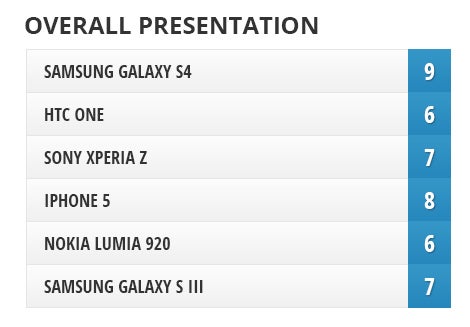
Details:
Now it's time to take out the magnifying glass and examine some full-resolution photos. Naturally, smartphones with higher pixel counts have a much higher chance at faring well in this category. That's why it comes as no surprise that the Samsung Galaxy S4 is once again leading the pack. At 100% zoom, its outdoor photos look great, preserving plenty of fine details while introducing a minimum amount of digital noise.
The second prize goes to the Samsung Galaxy S III and the iPhone 5, which both capture plenty of details, while maintaining a tolerable amount of digital noise. Close behind them is the Nokia Lumia 920, which also fares well, but has a harder time capturing shady areas in detail.
Although it has a massive 13MP sensor, the Sony Xperia Z can't wow us with its photos as it softens details way too much while adding a strange purple halo near the edges of objects in the frame. Something tells us that the camera's software algorithms might be to blame for this. And for the HTC One, its photos may be usable indeed, but they lack the fine detail offered by its competitors at 100% zoom.
We must note that in real life, the advantage of having that extra detail in the frame will be of true benefit primarily to those who develop large prints from their photos or in case a user needs to crop a certain area of an image. That's why despite their inferior performance in the detail category, the Xperia Z and the One are still considered cameras that are good enough for most people's needs.
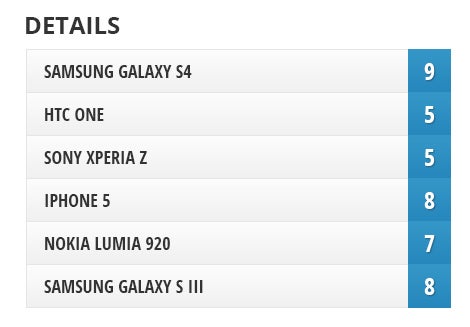
Indoors:
Taking photos indoors is a challenge regardless of what cameraphone is being used. Light is often far from optimal and our handsets' LED flashes can only do so much to help with scene illumination.
Still, when a strong to medium artificial light source is provided, all of the smartphones we're comparing fare well, with the Samsung Galaxy S4 and iPhone 5 being our favorites. Their photos maintain a color balance that's closer to reality while packing enough detail in the shot, which is why we favor them in this scenario. Indoor photos taken with the Sony Xperia Z or the Nokia Lumia 920 look fine, with sufficient detail and all, but the colors in them are way off. As for the Samsung Galaxy S III and HTC One, they are both a step behind in the detail department.
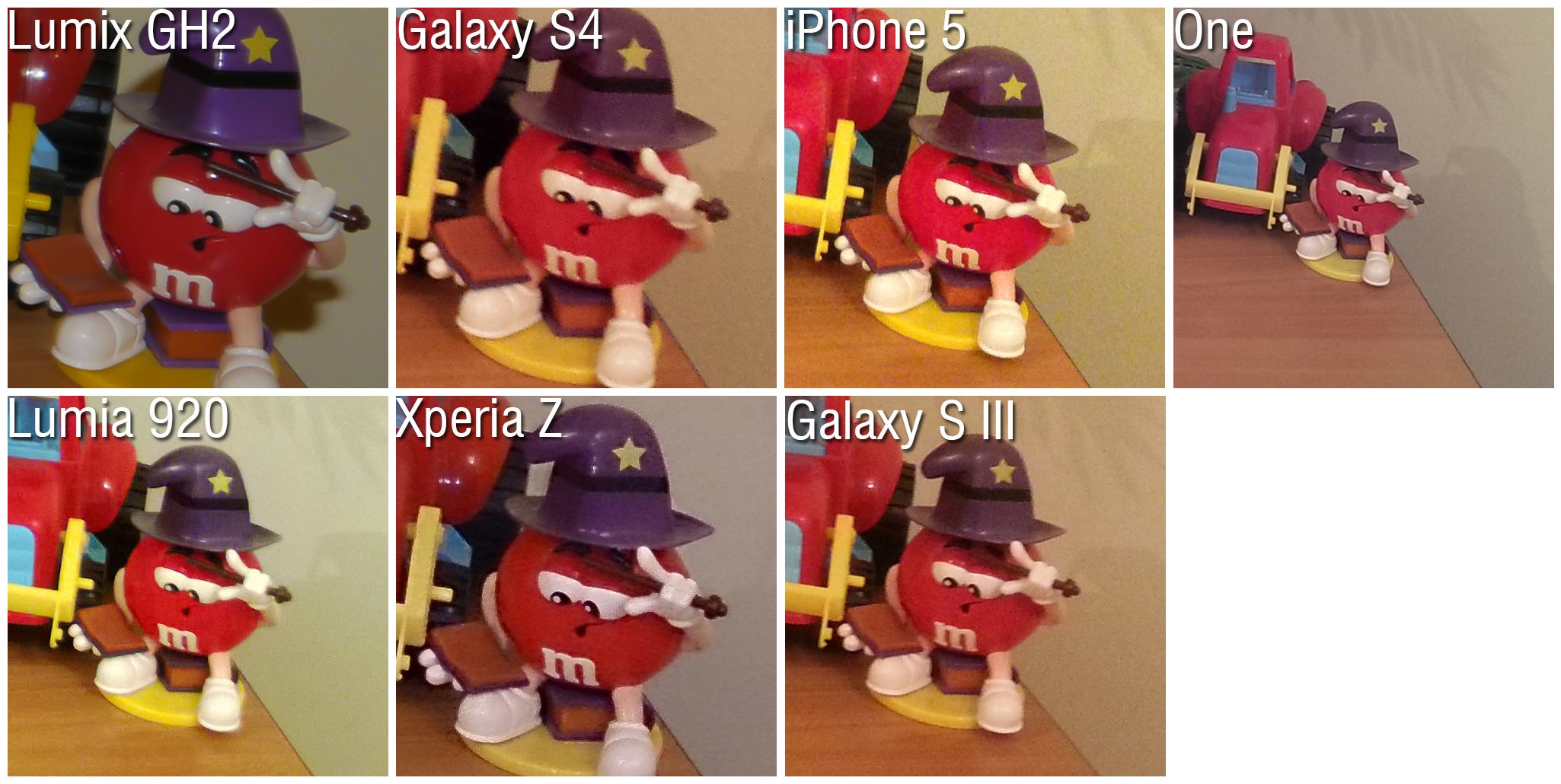
Medium light 100% Crops
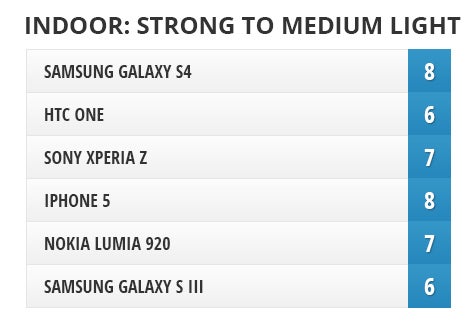
Looking at photos taken in low light conditions, or when there's no light at all and a phone's LED flash is surely going to fire, we're finding it hard to pick the best device among the bunch. But if we had to select a favorite, that would be the iPhone 5 as it is the phone that gives us best balance between color accuracy and detail level. Yeah, its photos may contain a very high amount of digital noise, but they are still the most usable overall.
The Galaxies can take detailed indoor photos as well, but the LED flash light firing results in a heavy shift of colors towards the cooler side. The Xperia Z, on the other hand, maintains a good color accuracy, but can't capture as much detail. Last in line stand the Nokia Lumia 920, which still has troubles capturing colors properly, while the HTC One's photos are underexposed if its LED flash fires.
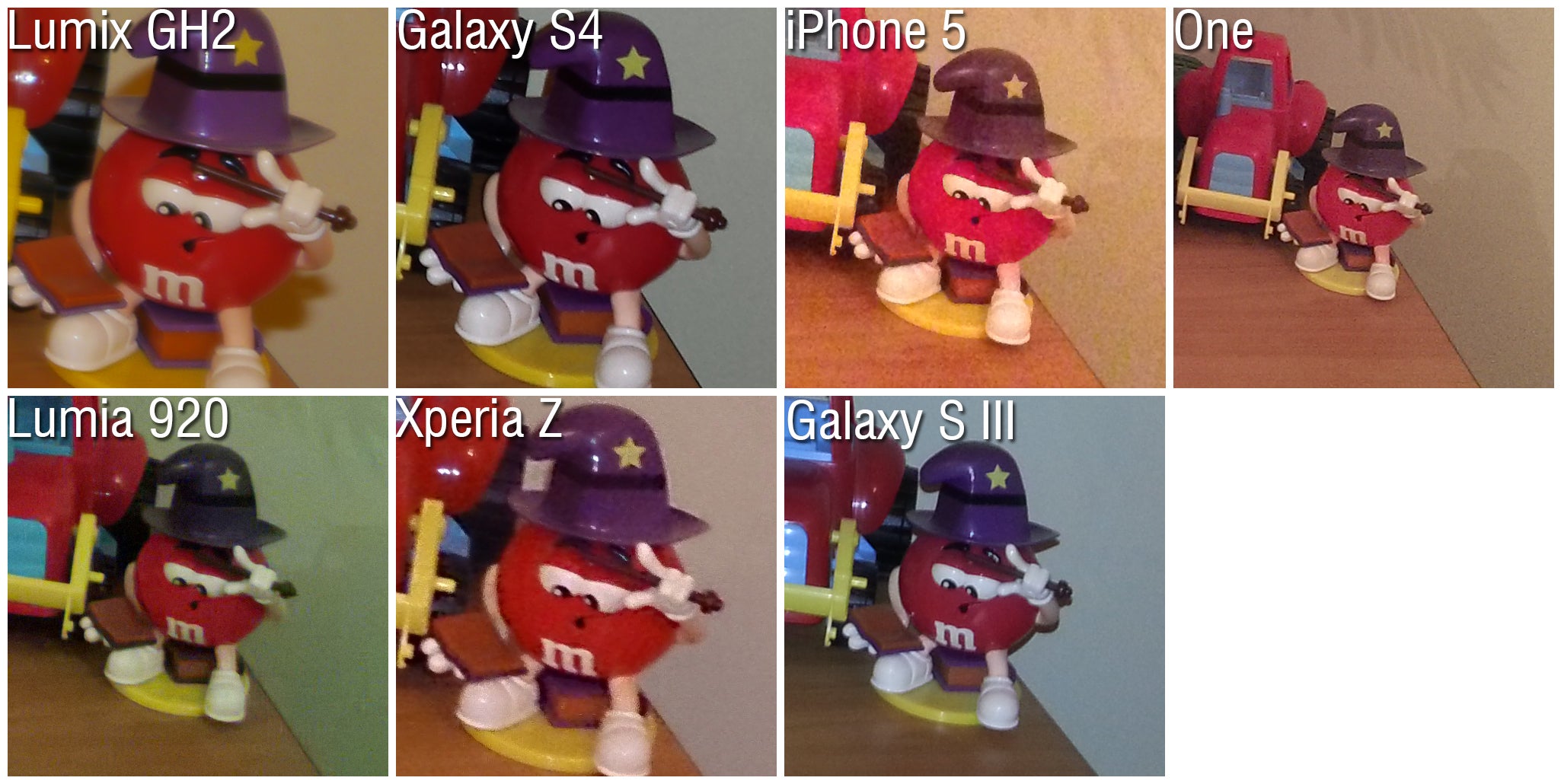
Low light 100% Crops
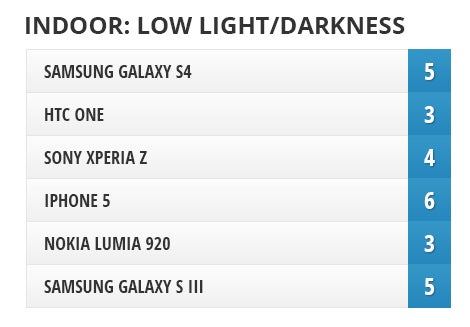
Night photos:
In the night shots category, we picked the Samsung Galaxy S4 and Sony Xperia Z as our favorites for a couple of reasons. First and foremost, their photos have that same warm glow that's typical for professionally taken night images – that's what makes them more appealing than the rest. Also, there's quite a lot of detail present in the frame. The iPhone 5 performs well, but its photos aren't as rich in details and have quite a lot of digital noise. Night photos taken with the rest of the gang are okay, with a decent amount of detail and all, but lack that pleasant color tone we were expecting to see in that kind of shot.
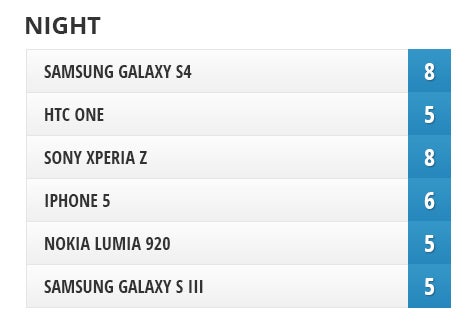
Video:
All of today's contestants are capable of taking smooth 1080p video at 30 frames per second – just as you would expect from a high-end device. Yet one of them gets the job done noticeably better than the others.
Outdoor video quality:
Looking solely at image quality, the iPhone 5 gets the top spot with its incredibly well stabilized video that's full of details while exhibiting eye-pleasing colors. And that, mind you, is achieved without optical image stabilization – just using software. Surprisingly, the Samsung Galaxy S III also manages to provide us with detail-rich footage and deserves to be in second place. The Samsung Galaxy S4, Sony Xperia Z, and HTC One perform equally well – their footage looks good, but isn't anything mindblowing and appears to lack fine details. Although the One has optical image stabilization, it doesn't seem to be making much of a difference in this case. As for the Nokia Lumia 920, its OIS feature works flawlessly, but the overly enhanced shadows and the unnatural colors present in the video spoil everything.
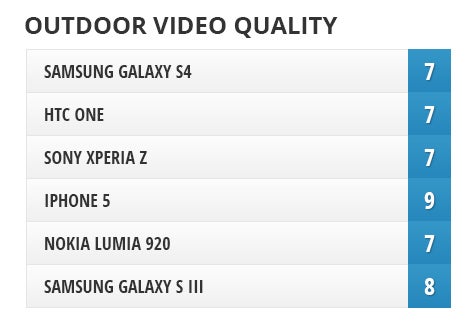
Indoor video quality:
It didn't take us long to pick the Samsung Galaxy S4 as the best smartphone for capturing indoor video. It is smooth, detailed, and pretty much free of noise unless light is really scarce. Indoor videos taken with the Samsung Galaxy S III or the Nokia Lumia 920 look very nice as well, but are somewhat noisier and have a little less detail in them. As for the HTC One, Xperia Z, and the iPhone 5, their videos are usable, but with that much noise and digital artifacts present in the footage, we can't quite call them enjoyable to look at.
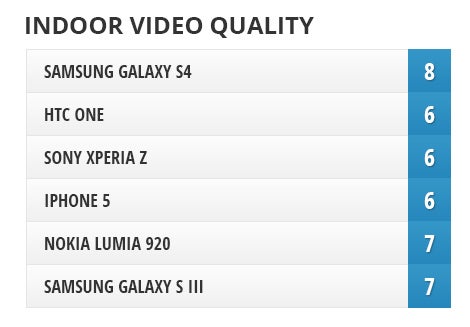
Night video quality:
Shooting video at night is another category where the Samsung Galaxy S4 excels at – its footage is rich in detail and delivers nice, accurate colors. Same can be said about the Sony Xperia Z, which also turned out to be a great shooter at night. We were a bit less impressed by the Nokia Lumia 920, and although it does an excellent job at stabilizing the frame, its videos are darker and have colors that are a bit off. The awkward color syndrome affects the HTC One as well, which also has troubles maintaining the focus at the right spot. The iPhone 5 would have been a decent performer if it wasn't for the excessive amount of motion blur. As for the Samsung Galaxy S III, its night video leaves something to be desired in terms of details.
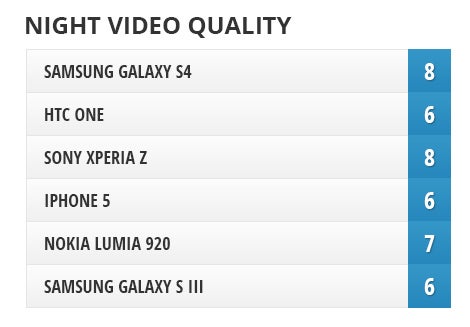
Sound quality:
Soundwise, the iPhone 5 is actually among the worse performers, while the Nokia Lumia 920, HTC One, and Sony Xperia Z deliver stellar results – clear, distortion-free and detail-rich audio. The Galaxies are okay in that aspect, with loud, yet average sound quality.
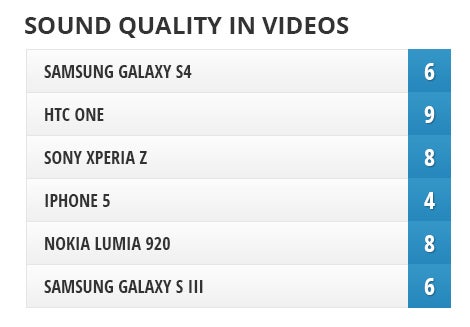
Interface and features:
What's common about all six of the smartphones we're comparing is that their cameras launch almost instantly after being triggered. In addition, the shutter lag on all six has been brought down to a minimum so that whoever's using them won't miss that special moment they're trying to capture. What sets them apart, however, is the UI.
The Samsung Galaxy S4 stands out of the crowd with the plethora of modes, built-in filters, and unique camera features. One of them is Dual Shot, which combines footage from both the rear and the front facing cameras in a single video. Imagine capturing the thrill of a rollercoaster ride and the frightened expression on your face simultaneously! Another neat feature is the built-in Story Album, which organizes photos that you've captured in an album, as the name implies. And let us not forget that the S4 can now take HDR photos as well.
So yeah, if features, camera modes, and manual settings are your cup of tea, then the Galaxy S4 was made for you. Its predecessor – the Samsung Galaxy S III, also offers plenty of flexibility in terms of tweaks and manual adjustments, but its feature set isn't quite as rich.
The HTC One camera interface is also highly versatile and overs a few handy tricks up its sleeve. For example, with the smartphone you can capture HDR Full HD video, slow-motion video at 120 frames per second and “Fast HD” 720p video at 60 frames per second. Also, its UI is neatly organized and straightforward to use.
The Nokia Lumia 920, on the other hand, comes with the stock Windows Phone 8 user interface, which is relatively basic in terms of features and settings. There is a solution to that, however, namely the so-called “Nokia lenses” that act as filters enhancing or modifying photos in a particular way. Additional lenses can be obtained via the Windows Marketplace.
The Sony Xperia Z's camera UI is okay, yet a bit unpolished. Launching the camera from the lock screen automatically launches the “Superior Auto Intelligent” shooting mode, which we find neither superior nor intelligent due to its unpredictability. Simply put, it does whatever it wants, so our advice is to stick with the “Normal” shooting mode. We must mention that the Sony Xperia Z supports both HDR photos and HDR Full HD videos.
Last but definitely not least we have the iPhone 5 with its incredibly simple and easy-to-use interface. Pretty much anyone and their grandma would be capable of using it without any problems. Sure, it offers no manual adjustments whatsoever – even the photo's resolution is beyond your control, yet nevertheless, the smartphone somehow manages to pick the proper settings almost every time.
Conclusion:
Following in the footsteps of its predecessor, the Samsung Galaxy S4 packs one of the best cameras to ever land on a smartphone's back. It might not be the ultimate cameraphone, but it is well capable of outperforming even its top-of-the-line competitors in a number of scenarios, such as close-ups, daytime shots, and night videos to name a few. Needless to say, it will take lots of effort and innovation for the other smartphone makers to come up with something better than the Galaxy S4's 13MP snapper.
Unfortunately, the Galaxy S4 leaves something to be desired when it comes to daytime video capturing. That's a field still dominated by the iPhone 5, which captures excellent 1080p video. In fact, its footage looks better than what OIS-enhanced handsets, such as the HTC One and Nokia Lumia 920, are capable of taking, as today's video samples show.
As for the rest of the gang, the iPhone 5 and Samsung Galaxy S III have once again proven that they're still part of the echelon of cameraphone photography with their sharp, detailed photographs. The Sony Xperia Z, despite having a sensor that offers more megapixels, produces photos that aren't as detailed as we wish they were. We must admit, however, that its night photos look pretty decent.
The Nokia Lumia 920 is a decent shooter, but we're unimpressed by its overblown colors. Yet we can't deny the fact that its optical video stabilization does make a noticeable difference, especially when shooting video.
Last but not least, the HTC One gets the job done in most scenarios, but leaves plenty of room for improvement. Sure, 4 megapixels are almost always enough for most users' needs, yet the amount of detail they capture just isn't on par with today's high-ends.

Software versions:
Nokia Lumia 920 - Windows Phone 8, Build number: 8.0.10211.204
Samsung Galaxy S III - Android 4.1.2, Build number: JZO54K.I9300XXEMB5
Sony Xperia Z - Android 4.1.2, Build number 10.1.A.1.350
HTC One - Android 4.1.2, Build number 1.28.401.7
Samsung Galaxy S 4 - Android 4.2.2, Build: JDQ39.I9505XXUAMC6_CSB
Apple iPhone 5: iOS 6.1.3
You can now read:
- LG G2 vs Samsung Galaxy S4 vs iPhone 5 vs HTC One Camera comparison
- iPhone 5s vs LG G2 vs Samsung Galaxy Note 3 vs Galaxy S4 vs HTC One vs Motorola Moto X vs DROID Ultra Camera comparison
- Google Nexus 5 vs iPhone 5s vs Sony Xperia Z1 vs Samsung Galaxy Note 3 vs Galaxy S4 vs LG G2 vs Nokia Lumia 1020 vs HTC One Camera comparison
Follow us on Google News
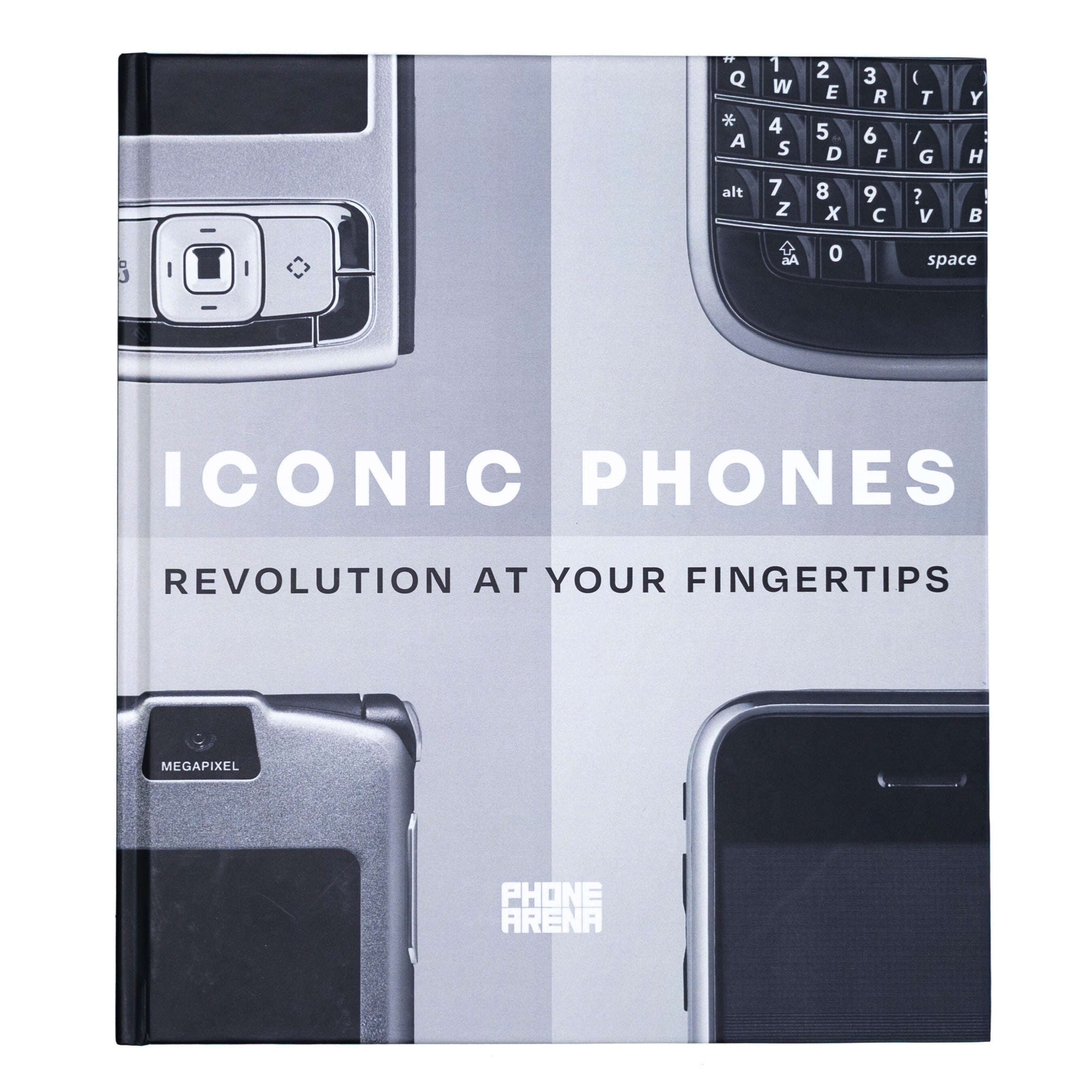
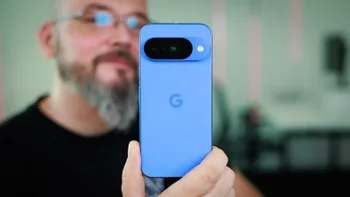
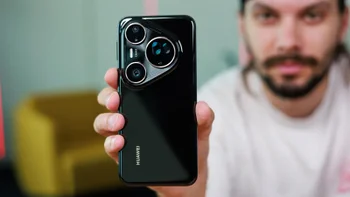
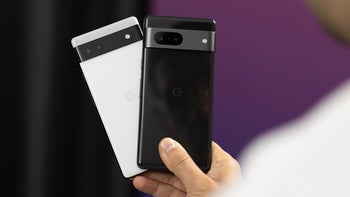

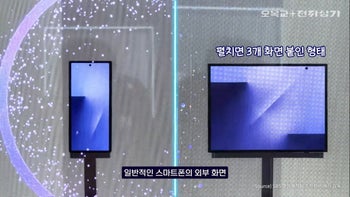
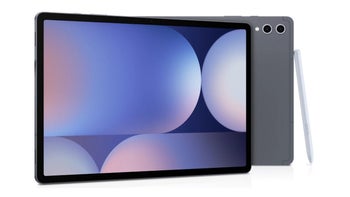
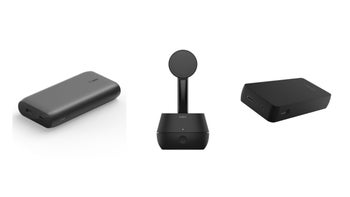

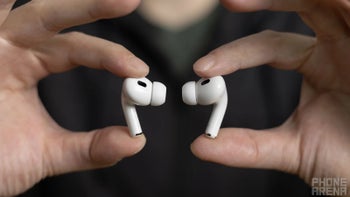
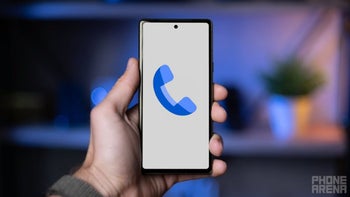

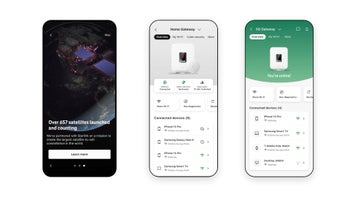
Things that are NOT allowed:
To help keep our community safe and free from spam, we apply temporary limits to newly created accounts: